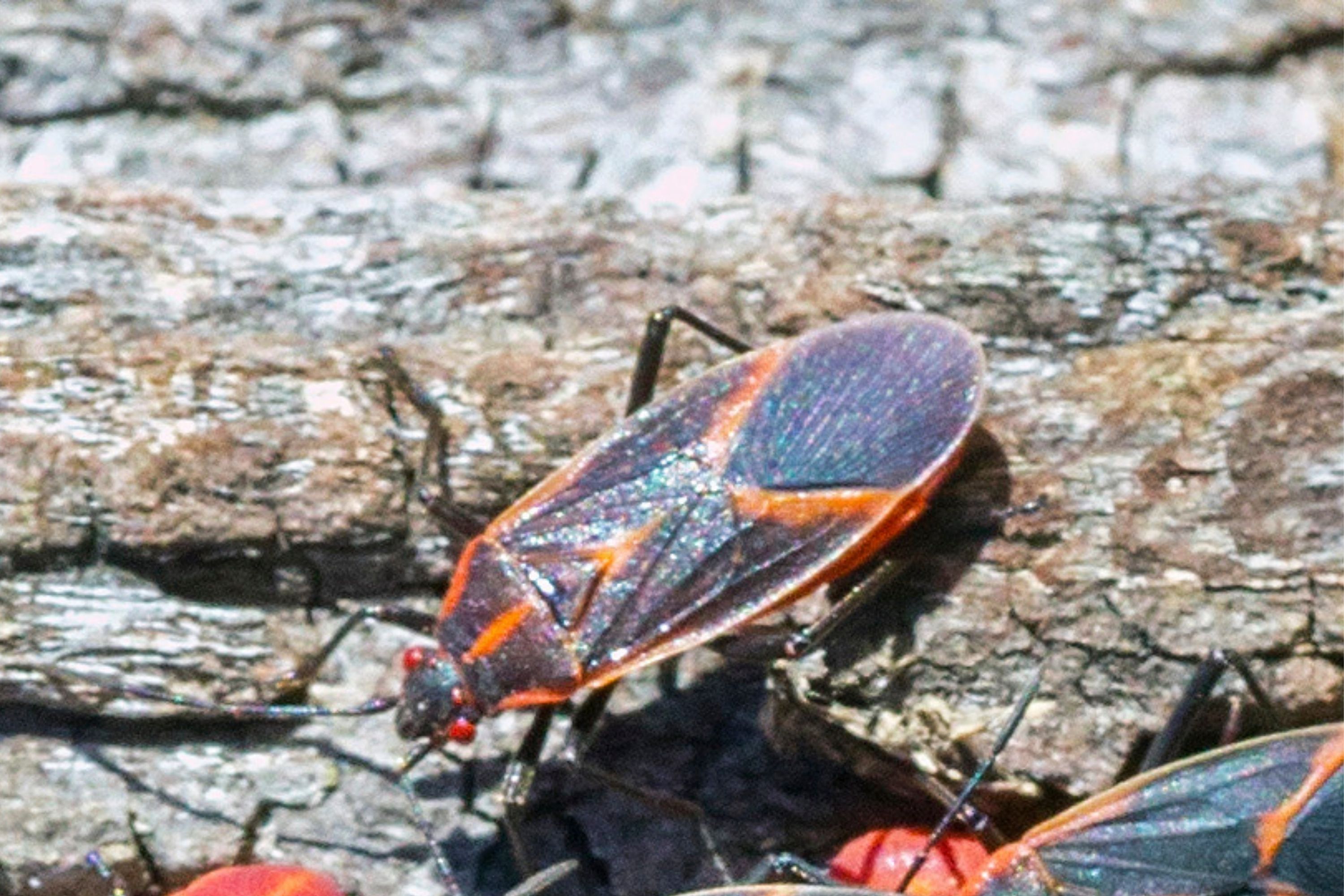Boxelder bug
(Boisea trivittata)

Description
The boxelder bug (Boisea trivittata) is a North American species of true bug. It is found primarily on boxelder trees, as well as maple and ash trees. The adults are about 13 millimetres (0.51 in) long with a dark brown or black coloration, relieved by red wing veins and markings on the abdomen; nymphs are bright red. In 2020, this species invaded Chile, thus becoming an invasive species. Boxelder bugs feed almost entirely on the developing seeds of boxelder, maple, and ash trees. The boxelder bug is sometimes confused with insects belonging to the genus Jadera, and with the western boxelder bug (Boisea rubrolineata) which it is related to. The name "stink bug", which is more regularly applied to the family Pentatomidae, is sometimes incorrectly used to refer to Boisea trivittata. Instead, boxelder bugs belong to the family Rhopalidae, the so-called "scentless plant bugs". However, boxelder bugs are strong-smelling and will release a pungent and bad-tasting compound upon being disturbed to discourage predation. This allows them to form conspicuous aggregations without being preyed on. These insects feed, lay eggs and develop on boxelder trees, most commonly occurring on female trees as they produce seeds. Boxelder bugs prefer seeds; however, they also suck leaves. They can be frequently observed on maple as these trees provide them with seeds as well. Boxelder bugs overwinter in plant debris or protected human-inhabited places and other suitable structures. Although they specialize on the seeds from maple, boxelder and ash, they may pierce other parts of the plant while feeding. They are not classified as an agricultural pest and are generally not considered injurious to ornamental plantings. However, they are known to damage some fruits in the fall when they leave their summer quarters in trees and seek areas to overwinter. Feeding by the bugs produces dimples, scars, fruit deformation, corky tissue, and even premature fruit-drop in strawberries and some tree fruits. During certain times of the year boxelder bugs cluster together in large groups while sunning themselves on warm surfaces near their host tree (e.g. on rocks, shrubs, trees, and man-made structures). This is especially a problem in the fall when they are seeking a warm place to overwinter. Large numbers are often seen congregating on houses seeking an entry point. Once they have gained access, they remain inactive behind siding and inside of walls while the weather is cool.
Taxonomic tree:







